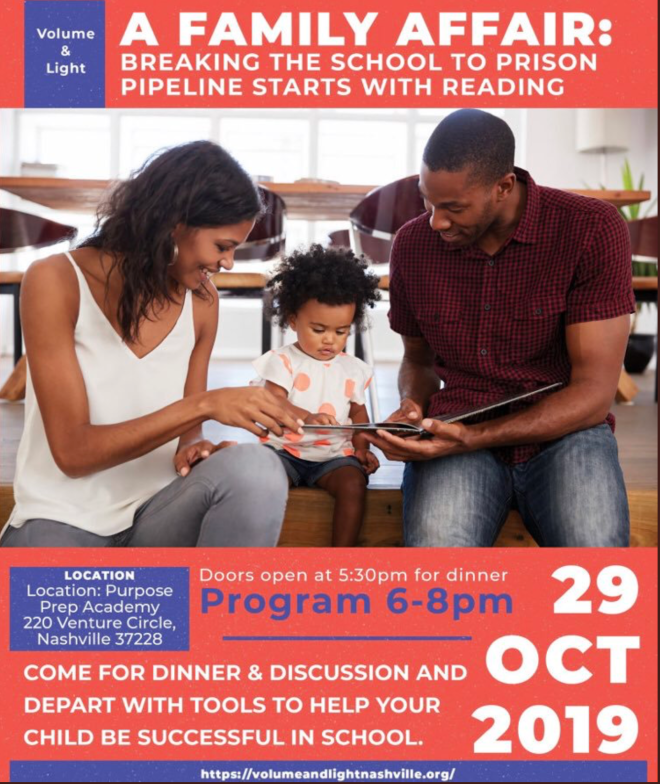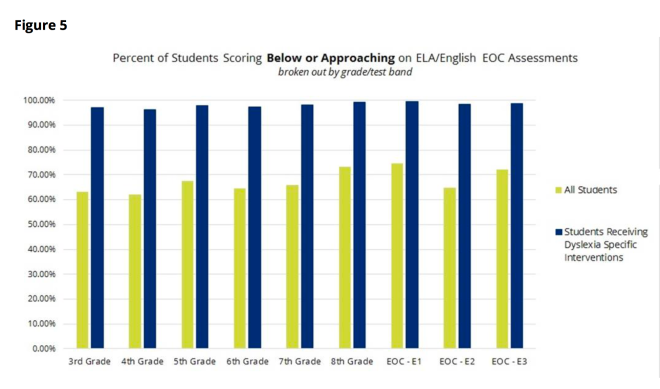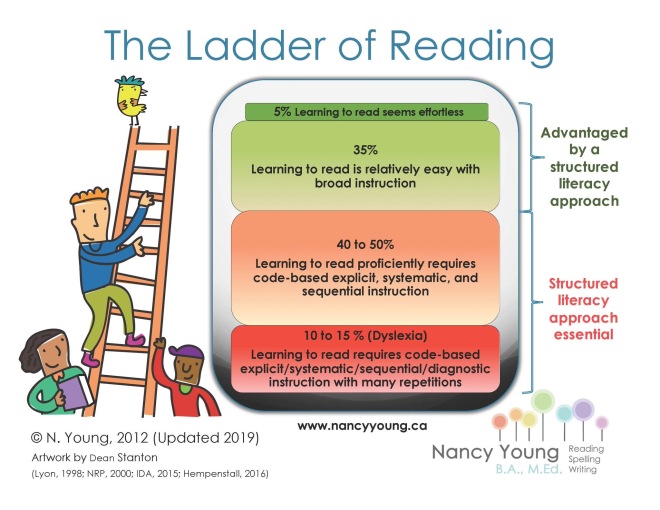Tonight I will be part of an important forum on Reading and the School to Prison Pipeline in Nashville, TN. As I prepare, I feel a hair-on-fire urgency about how our current system is teaching reading and how crucial it is that we ALL engage on this topic.
To prepare, I am looking anew at the statistics around dyslexia and prison. A highly disproportionate number of students with learning disabilities end up in prison because we never teach them to read and they learn early that they cannot succeed in school. (For more statistics and information click Why We Should All Care About Dyslexia.)
- 85% of youth in juvenile detention facilities have disabilities that make them eligible for special education services, yet only 37% receive these services while in school. – National Council on Disabilities. June 18, 2015. Breaking the School-to- Prison Pipeline For Students with Disabilities.
- 80% of prison inmates in Texas are functionally illiterate. 48% have dyslexia. – Prevalence of Dyslexia Among Texas Prison Inmates. Moody KC, et al Tex Med 2000.
- 49% of Prisoners do not have a high school diploma. – National Center for Education Statistics, Literacy Behind Prison Walls, October 1994.
- The federal government passed the First Step Act in 2018 that requires all prison inmates to be screened for dyslexia. – https://www.cassidy.senate.gov/newsroom/press-releases/cassidy-urges-full-implementation-of-first-step-act-dyslexia-screening
- In 2019 in Tennessee, only 28.8% of all 3rd graders were On Track in Literacy and only 15.2% of economically disadvantaged 3rd graders were On Track. – http://www.scarlettfoundation.org
- 97.6% of Tennessee students with “Characteristics of Dyslexia” scored “Below” or “Approaching” on ELA 3-8 assessments. – Tennessee Dyslexia Advisory Council Annual Report 20017-2018.


If we look at all these statistics, it is so clear that we simply are not teaching all students to read. There are huge groups of students who are falling through the cracks of our system. There are many complex factors that all can add to this systemic failure including race, poverty, trauma, teacher shortages and funding. But my view is that one thing that is very much in our power to change is literacy and specifically how we teach reading.
Despite the passage of our #SayDyslexia law in Tennessee in 2016 and the creation of a 44 page Tennessee Dyslexia Resource Guide, we still are only haphazardly screening students for dyslexia and rarely giving students the explicit, systematic phonics RTI2 interventions which they are guaranteed by the law . Our Department of Education estimates that 10% (around 97,000) of Tennessee students have characteristics of dyslexia, which means that we are currently failing to identify and educate a large group of our most struggling readers.
When I tell groups this, people get upset and can feel overwhelmed that change will never come and that we are doomed to a failed system where huge numbers of our children are never taught to read and too many end up in prison. But there is good news in this sky-is-falling story. There is hope. We can fix our system and we know exactly how to do it. We just all need to band together to push for change for all children. The stakes couldn’t be higher.
Without going into too much detail here, the way we currently teach reading is called “Balanced” literacy. It has a lovely name but don’t be fooled. It is not really balanced at all. It teaches students to “read” by using picture clues to guess at words. This is sometimes called “3 – Cueing.” It has some phonics sprinkled in, but guessing does the heavy lifting. Under “Balanced” literacy children are not taught to sound out the 44 letter sounds of our beautiful language. Instead the underlying belief is that surrounding kids with books will make them love to read and once they love reading they will then read more and get practice an thereby become better readers. The problem is that for students with #dyslexia, this system will never teach them to read. Instead it teaches strategies that students with dyslexia already use quite well. When they don’t know a word – they guess. They look at pictures. The try to solve the sentence with context clues. This is a coping mechanism they use when they can’t break the code of our language. It is not something we should be teaching. We cannot just teach children to love reading. That is not enough. We must give them the skills to do it. Instead, we need to move to a system called Structured Literacy that teaches all children explicitly and systematically the word sounds of our language in a way that builds on prior word and letter knowledge so that children can stop guessing. So they can stop looking at pictures but rather decode the word. We know this method works for ALL children, but is crucial for students with dyslexia. But the only place the students can access this type of intense intervention is in Special Education. Structured Literacy is simply not taught in the general education classrooms of Tennessee.

In Nashville, we have used “Balanced” literacy for years, and our students are failing. As shown in the statistics above, only 28.8% of all 3rd graders are “On Track” in reading and 97.6% of students with characteristics of dyslexia are reading far below “On Track.” If you look at the chart above that makes perfect sense. Only about 40% of students can learn to read no matter how they are taught but 60% of them need a Structured Literacy to read. So, putting all of it together, in Nashville, we are currently failing to teach the majority of kids to read. Period.
The problem is that certain members of our school board and of our district administrations are bound and determined to KEEP DOING WHAT WE ARE DOING. They look at all the information above, and as of last week, they CHOSE to keep using “Balanced” literacy. It is my belief, and the belief of millions of educators, experts and advocates that we need to shift how we teach reading in America. We can do it. We have all the resources we need and experts on hand to help. We just need the support of the public, districts and schools boards to make this important change. Here is how we end this cycle:
1. Require all teaching colleges to ensure new teachers know how to teach Structured Literacy and the science behind how our brains learn to read.
2. Give current K-3 teachers professional development on how to teach Structured Literacy and the science behind how our brains learn to read.
3. Educate all teachers on common learning disabilities.
If we don’t make this change soon, our students will keep failing. Our students with dyslexia will still be left to struggle. Too many students will end up in prison, dropping out of school or committing suicide.
- 85% of youth in juvenile detention facilities have disabilities that make them eligible for special education services, yet only 37% receive these services while in school. – National Council on Disabilities. June 18, 2015. Breaking the School-to- Prison Pipeline For Students with Disabilities
- Only 68% of students with Learning Disabilities leave high school with a regular diploma while 19% drop out and 12% receive a certificate of completion. – “The State of Learning Disabilities.” Third Edition, 2014. Pgs. 16-17. National Center for Learning Disabilities.
- Students with learning disabilities like dyslexia have a three times higher risk of attempting suicide. – Suicidality, School Dropout and Reading Problems Among Adolescents. Journal of Learning Disabilities, vol. 39,6: pp 507-514. First published Nov. 1 2006.
I hope that all of you who come to the event tonight or read this post feel empowered to engage on this issue. Start talking about literacy, dyslexia and the school to prison pipeline. Talk about it to co workers. At PTO meetings. At church. Tweet about it. Post some of the articles referenced above to your Facebook page. Email your school board member to encourage them to teach ALL students to read using Structured Literacy. If we all work together, we can make real change for all children and for our city. Join us. Thank you.
***
If you are a parent who read the information above and wants to learn more about how your child is reading, here are some questions you can take. If you are worried, DO NOT WAIT.
Q1. Teacher, do you use cueing (use of picture clues & guessing new words) to teach my child to read? A majority of teachers use guessing or “cueing” strategies. “Good Readers” do NOT use them. If your teachers uses these, this should be a read flag.
Q2. Teacher, you say you teach decoding & phonics. Is it taught explicitly & systematically? Teachers may teach decoding or phonics, but it is done randomly. Kids need to learn letters & sounds in small groups in a way that builds easy to hard. Make sure to look closely at HOW phonics are taught.
Q3. May I please have a copy of my child’s MAP scores? Students are tested 3 times a year on reading fluency and places in RTI tiers accordingly. You have a right to see their scores. If the score is low (under 30%) you need to ask WHY.
Q4. My child has a low MAP score but she is getting A’s and B’s on her report card. What is the discrepancy? Many low readers get good grades so parents don’t worry. We think “My kid gets A/Bs so she can read, right?” Wrong. Report cards are deceiving. Dig deeper.
If you look at all the above information and are worried about your child’s reading, DO NOT wait. Gather the info above and then demand he/she gets tested for a learning disability like dyslexia. Here are some great places to start to learn more about dyslexia:

Wow! That is definitely something to think about. I am glad that our school district has a phonics skills based learning as part of our curriculum.
LikeLike
As a Learning Disabilities Teacher-Consultant in New Jersey and former teacher in a New Jersey juvenile detention facility, I can vouch for this critical revelation. If we started earlier in the educational process to identify children with dyslexia and other cognitively-related reading difficulties, we could stem the flow of struggling students into punishment and incarceration systems in our nation. Alienation from the classroom and productive peers causes profound dislocation for our students in the learning process. There are assessments and screener that can help with the identification process.
LikeLiked by 1 person
As a Learning Disabilities Teacher-Consultant in New Jersey and former teacher in a New Jersey juvenile detention facility, I can vouch for this critical revelation. If we started earlier in the educational process to identify children with dyslexia and other cognitively-related reading difficulties, we could stem the flow of struggling students into punishment and incarceration systems in our nation. Alienation from the classroom and productive peers causes profound dislocation for our students in the learning process. There are assessments and screener that can help with the identification process.
LikeLiked by 1 person